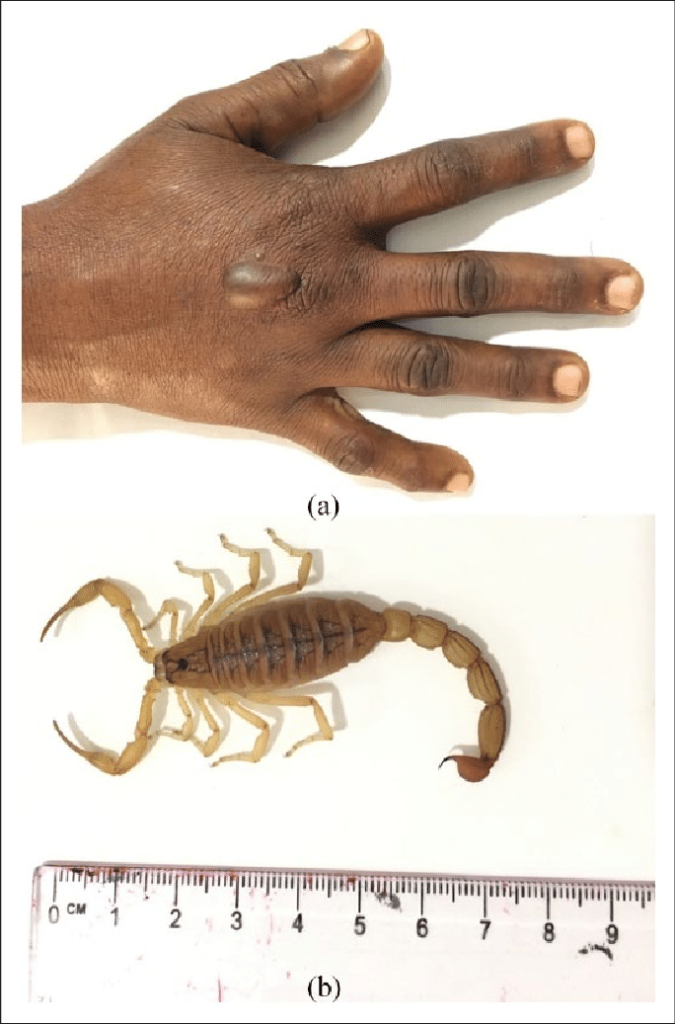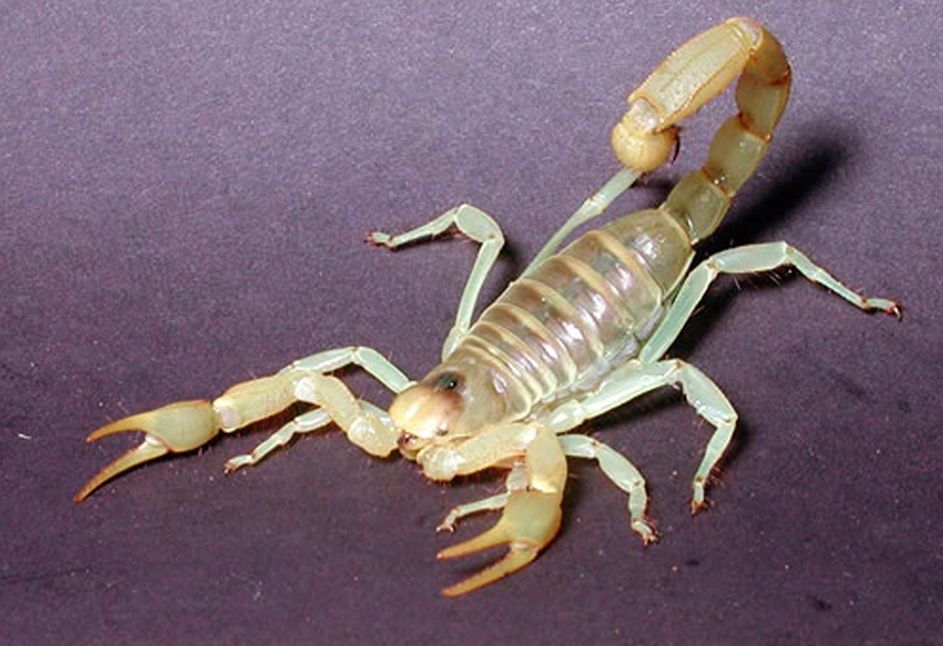
What does a scorpion sting look like on a human?
What does a scorpion sting look like? A scorpion sting may make your skin look red and slightly swollen. Most stings aren’t harmful and only cause pain around the stung area. You may feel a mild tingling or burning sensation.
The pain you feel after a scorpion sting is instantaneous and extreme. Any swelling and redness will usually appear within five minutes. More severe symptoms, if they’re going to occur, will come on within the hour.
It’s possible to die from a scorpion sting, though unlikely. There are an estimated 1,500 species of scorpion in the world, and only 30 of these produce venom toxic enough to be fatal. In the United States, there is only one species of venomous scorpion, the bark scorpion.
Scorpions are predatory creatures that belong to the arachnid family. They have eight legs and can be recognized by their pair of grasping pedipalps, which resemble pinchers, and their narrow, segmented tail. This tail is often carried in a forward curve over a scorpion’s back and ends with a stinger.
Scorpions are common throughout Australian gardens and in the bush. There are many different species, with the most venomous located in the Northern Territory. The smallest ones tend to be the most venomous in Australia. Contrary to popular belief, Australian scorpion stings do not appear to have life-threatening effects, even in children, researchers from the University of Newcastle have found. There are no recorded deaths from the sting of an Australian scorpion.The sting of the scorpion is at the end of its long tail. It is here that the venom is located. Scorpions catch their prey with their pincers and then envenom it with their tail.
Symptoms of a scorpion sting
While the stings cause severe pain localised to the area of the sting, for several hours, they seem to have no major systemic effects. Other side-effects that may be experienced include redness, tenderness, numbness, paraesthesia (abnormal prickly sensation), nausea, headaches and tiredness/fatigue. There is no evidence of any recorded allergic reactions to the venom of Australian scorpions.

Scorpion sting symptoms
If you are stung by a scorpion, you will most likely feel the sting. It is very similar to that of a bee sting and will be an intense sharp pain. After that, some of the symptoms of a scorpion sting include:
- Intense pain around the sting site
- Tingling or a numbness centered around the sting site
- Swelling around the spot where you were stung
For most people, if they keep the wound clean and bandage it to prevent any kind of infection, the above symptoms will be the extent of what they feel. However, since scorpions may inject venom, or people may have an allergic reaction to the stings, some of the additional symptoms of a scorpion sting include:
- Difficulty breathing
- Muscle spasms
- Drooling
- Vomiting or intense nausea
- Fever
- Heart palpitations or increased blood pressure
- Strange movements of the head or neck
- Sudden crying or restlessness – most often seen in children
Why do scorpions sting?
Scorpions do not want to sting people. They are looking to sting prey, but even then, they may not deliver venom via their stinger. Scorpions only have a finite amount of venom within their system and they choose to prefer to use it for specific purposes. If their prey is small enough, they can use their claws to grab it and tear it apart to eat it. However, to paralyze larger prey, they will lunge their tail forward and sting their prey to immobilize it and then eat it.
As for when scorpions sting humans or other threats, they do so to deter being eaten or injured themselves. The sting of a scorpion can be very painful and it is usually enough to cause any potential predator to back off and leave them alone.
If a human tries to handle a scorpion, they are going to perceive this is a threat and potentially deliver a sting. The best bet when seeing a scorpion is to try and leave it alone and not handle it yourself.
Scorpions do not want to sting people, but they will if they are threatened. They do so to deter anyone from handling them or potentially injuring them.






